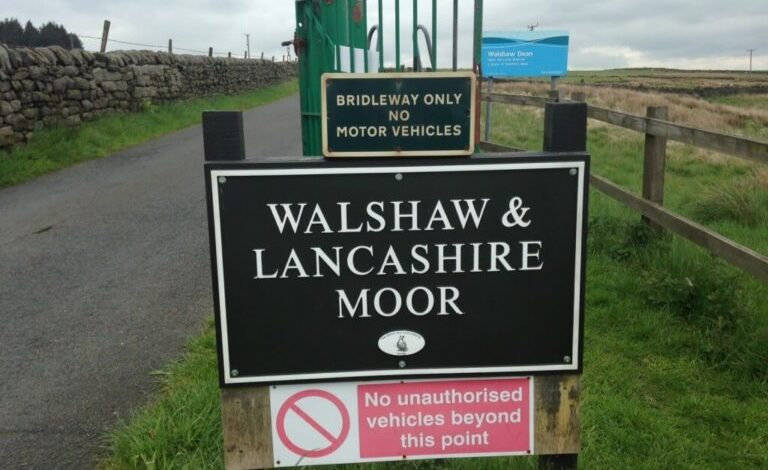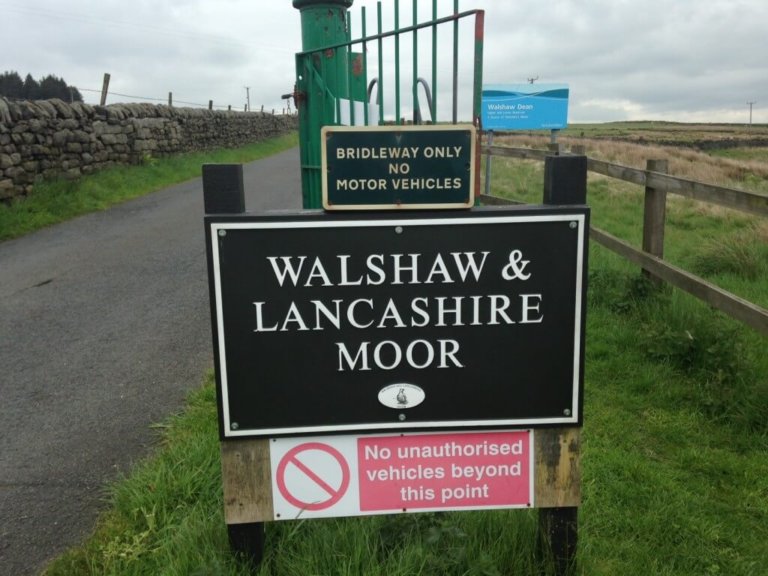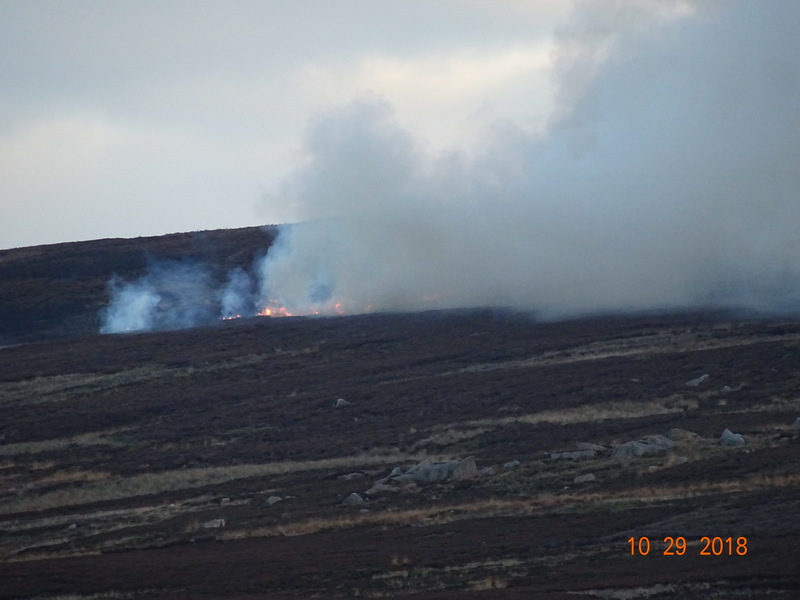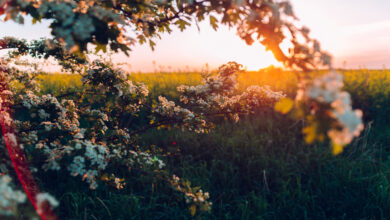On (but not on) Walshaw Moor – Mark Avery


If there were a fan club for Walshaw Moor then I’d be a member, despite never having set foot on it. I have passed it on the roads, stopped and looked at it, been glared at by its gamekeepers and spoken about it in meetings in both Hebden Bridge and Haworth and even won a legal case for it, but never set foot on it.
Despite being a small patch of upland England, Walshaw Moor has brought together four potent issues of land use: natural carbon storage, wildlife conservation, recreational shooting and generation of renewable energy. Walshaw Moor is a blanket bog with deep peat, it is designated for its high nature conservation importance, it is a driven grouse moor and there are plans for an enormous windfarm here.
We are just beginning to value blanket bog for its carbon storage in a world where other carbon sources, coal, oil and gas, have been burned to fuel our lifestyles and in so doing have damaged the climate. The UK’s upland peatlands clothe the tops of hills in places that are too wet, too windy and too cold to be of much use for agriculture or forestry and where some people would like to walk but few would like to live.
These boggy uplands are homes to ground-nesting birds such as Golden Plover, Short-eared Owl and Merlin. Others that once lived in the lowlands too, such as Curlew and Hen Harrier are now mostly restricted to the uplands. Further north, blanket bogs like Walshaw Moor might host Dunlin, Greenshank and Golden Eagles too.
The time to visit for wildlife is late spring and early summer, April into July, when the plants flower, the insects buzz and the birds sing. You can have magical days if you are lucky. The rest of the year, the moors can seem empty of much life but if you pause to try to identify the mosses around you then consider that their ancestors’ bodies form the peat which may stretch for metres beneath your feet.
There will always be some Meadow Pipits, they are a common bird, with a distinctive song flight, Skylarks too, but also the Red Grouse which is one of the only birds tough enough to stay in these areas through the winter months. Red Grouse (known from Famous Grouse whisky bottles and those amusing Christmas advertisements) is one of four grouse found in the UK: Capercaillie (in Scottish pine forests), Black Grouse (on the forest/moorland interface in Wales, northern England and Scotland), Red Grouse on the open heather moors and Ptarmigan (on the highest mountain tops). The Red Grouse keeps changing its taxonomic status but analysis of its DNA seems to be settling down on it being a UK endemic species rather than just the slightly different race of the circumpolar Willow Grouse. So, it’s a special bird that lives in our uplands, braves the winters and persists on an almost completely vegetarian diet of heather. And we love it so much that we shoot them in droves. We also shoot them on drives because almost all UK grouse shooting is driven shooting where the shooters wait for the living targets to be chased towards them by a line of ‘beaters’ with flags and whistles. As the grouse whizz past, the shotguns fire. A day’s shooting might involve half a dozen or more drives of different parts of the moorland with 6-8 guns (the shooters) and the bag (body count) might run to hundreds of birds for the day. The record bag day still stands at 2929 Red Grouse shot by eight guns on the Abbeystead estate on the opening day of the Red Grouse shooting season in 1915.

Walshaw Moor is owned by Richard Bannister, an apparently wealthy businessman who is also a grouse shooter. I don’t know Mr Bannister personally, I wouldn’t recognise him if we passed in the street, and to some extent I think he should be allowed to get on with his grouse shooting provided he sticks to the law and he exercises his freedoms and privileges with due regard to the well-being of others. Aye, and there’s the rub with driven grouse shooting, it has considerable influence on the rest of us. Without going into details (partly because I’ve written a whole book on the subject; Inglorious: conflict in the uplands (second edition 2016, Bloomsbury)), grouse moor management involves killing native predators which might eat the Red Grouse (some legally (Red Foxes, Carrion Crows etc) and some illegally (Hen Harriers, Badgers etc)), burning the vegetation (increasing water pollution and flood risk, and drying the peat leading to increased carbon emissions) and creating a scarred landscape.
Grouse shooting does have some benefits for some wildlife – all those dead Red Foxes, Carrion Crows and Stoats might well have been eating Snipe, Curlew and Golden Plover eggs as well as Red Grouse eggs. But it’s difficult to know whether the 500,000 Red Grouse killed each year through recreational shooting have benefitted by not being Fox food as an egg. Golden Plover are still shot in the UK, as are Snipe, and it’s not that long ago that the shooting industry was arguing that Curlew should be kept on the list of shootable species. Clearly species like Curlew don’t directly benefit from Red Grouse being shot after the Inglorious 12th each year, they benefit from the habitat protection and other management that produce Red Grouse for the guns. It would be easy to keep elements of beneficial management for ground-nesting birds and not shoot a single Red Grouse whatever the vested interest of the shooting industry says.
Although people spend money to shoot Red Grouse, this is simply a hobby and if driven grouse shooting were banned, as I’d like to see, the shooters would spend their money on other hobbies be they yachts, fine wines or owning racehorses.
I talk to people who shoot grouse and I don’t get the impression that they rank Mr Bannister as one of their gang. He bought his grouse moor in 2002 rather than inherited it from a chain of ancestors stretching back centuries and he earned his money in the retail business rather than inherited it. Mr Bannister goes his own way (and, frankly, I admire him for that) but he first came to my notice in 2012 when he got into a legal dispute with Natural England (NE) over the building of tracks, car parks and drainage ditches on Walshaw Moor and the extent to which his burning regime for Red Grouse was damaging the conservation interest of this land. Inglorious has nine consecutive pages (pp149-157) on this dispute. Mr Bannister got into trouble because much of his land is designated for its nature conservation value – the blanket bogs and the wildlife on them. The nomenclature for these designations, Sites of Scientific Interest (SSSIs), Special Protection Areas (SPAs) and Special Areas of Conservation (SACs) are ugly terms for different grades and types of ‘wildlife-rich’ places but they mean that the likes of Mr Bannister cannot simply do what they want on them, just as if you buy a listed building you can’t take out the original windows and paint the roof purple without seeking permission which might not be granted. We all waited for a big explosion as the legal case proceeded through a public enquiry but it ended with a whimper, not a bang, as NE and the estate came to an agreement, although quite how and why that came about is still uncertain. A new management agreement was drafted and life went on without, it seemed, Mr Bannister and the Walshaw Moor Estate having to reinstate the (allegedly) damaged areas of land.
But things didn’t end there, as the RSPB complained to the European Union that this new accommodating agreement meant that the UK was in breach of its legal conservation obligations. That line of activity produced, after many years, regulations to change burning regimes on grouse moors and far greater scrutiny of management practices. I can see why other grouse moor managers don’t necessarily thank Mr Bannister for his arrival in their industry since buying Walshaw Moor.
But there was a little more to come. In 2018 I became aware of a permission given by NE to the Walshaw Moor estate to build yet another track and to allow what appeared to be damaging burning. I, as an individual, took a legal challenge with the top London legal firm, Leigh Day, to challenge NE’s decision through a process called judicial review. We won the case without going to court – click here – because NE had to admit their error and that track has not been built. There remain questions about why and how NE, a regulator, gave permission in the first place – click here. My case was significant in putting a shot across NE’s bows about behaving lawfully and it and a couple of other legal cases were seminal in the emergence of Wild Justice which was set up by Ruth Tingay, Chris Packham and me. So, Richard Bannister also deserves the thanks of many public bodies and government departments in helping to bring Wild Justice into existence.
And now we are faced with a proposal for a massive windfarm on deep peat on Walshaw Moor. This is morbidly amusing and maddening all at once. The faint tinge of amusement, for me at least, is that grouse moor owners have long pretended that grouse shooting will protect land and landscapes from windfarms. Yet here is Mr Richard Bannister, grouse moor owner, proposing to have a windfarm of 65 turbines on his land. Now I don’t know that Mr Bannister has at any time signed up to this story about grouse moors protecting land from windfarms but it clearly isn’t very convincing when the largest onshore wind farm conceived for England is for his grouse moor.
The Calderdale windfarm proposal is maddening because it makes no environmental sense although I can see that if government were mad enough to approve it then it would be very much in Mr Bannister’s personal financial interest. I’m a fan of wind turbines – I actually like them and believe we need them – but Walshaw Moor is not the place for them and nor is any other deep peat site. I’m a YIMBY, there are already 25+ wind turbines within 5 miles of my home in Northamptonshire and I’d be happy to see more.
In a rational world where government decisions were made according to the evidence and with the intention of enhancing the public’s well-being and happiness then there would be no prospect of a large windfarm on Walshaw Moor – the turbines would go to other sites where their linkage to the grid would be easier and their building would not wreck carbon stores. But the world seems to have become crazier in the last decade or so. We must keep fighting – and I am sure we will.
What might be the future for Walshaw Moor if I get my way and driven grouse shooting is banned and if rationality gets its way and no windfarm is constructed? My personal view is that wise land management in the uplands would most easily be done through public ownership rather than through private investment decisions. In my most recent book Reflections: what wildlife needs and how to provide it (Pelagic 2023) I point out that after WW1, when we needed timber, the state bought land and that’s how we have the Forestry Commission. If we need a Nature Commission and a Peatland Commission then maybe we should have them rather than mucking about trying to persuade the likes of Mr Bannister to do the right thing for society at large. And the right thing would be quite a lot of doing nothing. The snag for a private landowner is that doing nothing rarely returns an income despite not having much of a cost. That’s a much smaller problem for the state.
I’d like to finish with three mentions of people because I have found that one of the joys of public campaigning is the people you meet along the way.
First, and I won’t embarrass them by mentioning their names, a family I met, by chance, in 2019 in Berlin. My wife and I were returning to the UK from Poland by train (we don’t fly) and broke our journey for two nights in Berlin. The first evening we shared a table with a family from the Calder Valley. Years later I received an email saying ‘you won’t remember us but…’ from that family saying they had been researching the floods in Hebden Bridge and found my blog and then my book Inglorious. I saw them for a second time at the community meeting in the Old School Room in Haworth in September 2024. It is a small world.
I was listening to Woman’s Hour in the car one day in 2013 and heard the interview with the landlady of the Crown Inn in Hebden Bridge, Lesley Wood, talking about floods which had closed her business for months. In May 2014, I stayed at the Crown, on my way home from a frosty meeting in Cumbria with grouse shooters and trainee gamekeepers. I arranged to chat with Lesley over my breakfast, which she cooked. I was moved, by the impact of flooding on her life and business. The water had come from Walshaw Moor, and we know that burning exacerbates flood risk in high rainfall events. Lots of other businesses and homes were flooded at the same time, and it has happened since too. I drove home in pensive mood but decided to start a campaign to ban driven grouse shooting not just for Hen Harriers, not just for blanket bogs but also for people like Lesley. I don’t know whether she has ever signed a petition to ban driven grouse shooting or even noticed them but that campaigning has been partly for people like her.
And then there is Nick MacKinnon whose blogs – 46 so far by Nick and friends, click here – I have published since January 2024 and what a great pleasure it has been. I have met him just the once, in Haworth but his blogs are works of art; they are long, meandering and adorned with jewels along the way. Nick could teach many of our conservation organisations a thing about campaigning, writing, peat, economics and sheer doggedness. You must be dogged, relentless and determined to make a difference when, often, it feels as though the powerful bits of the world are against you and most of the world isn’t paying any attention.
Is there a fan club for Walshaw Moor? I feel I am a member.
[registration_form]




